 |
 |
 |
| |
Overlap Between Cognitive and Physical Frailty in Persons with HIV
|
| |
| |
Aging Workshop Oct 14-15 2022
Because of this interaction between frailty and cognitive deficits, concept of cognitive frailty
"Targeting shared risk factors can have benefits in terms of both syndromes - in the general population multicomponent interventions of exercise, nutrition and cognitive intervention can be benefitical.
In addition, consider prioritizing these individuals with these syndromes for geriatric assessment"
Mary Clare Masters, MD
Assistant Professor of Medicine, Division of Infectious Diseases
Northwestern University Feinberg School of Medicine
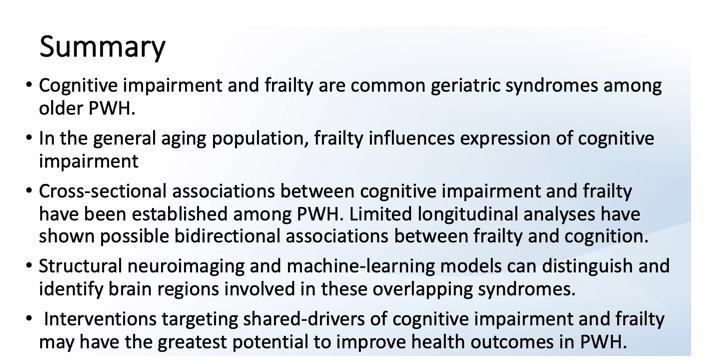
Cognitive disorders are common among PWH
The global burden of HIV-associated neurocognitive disorders is estimated to be about 40%.
With the widespread use of effective antiretroviral therapy, HIV-associated dementia, which is characterized by marked cognitive and functional impairment, is now uncommon. Less severe forms of HIV-associated neurocognitive disorder, such as mild neurocognitive disorder and asymptomatic neurocognitive impairment, persist.
persist among PWH despite ART
HAD-marked cognitive impairment with marked functional impairment
MND-cog impairment with mild functional impairment
ANI-abnormality in two or more cognitive domains without functional impairment

Frailty is a clinical state of increased vulnerability to adverse outcomes from stressors. It is associated with declines across multiple physiologic systems.
It is associated with advancing age, but not all individuals become frail. Woman on left non-frail while man on R is frail.
Frailty is seen in PWH at younger ages than the general population and its prevalence ranges from 5-29% among those 50 and over, depending on the cohort studied
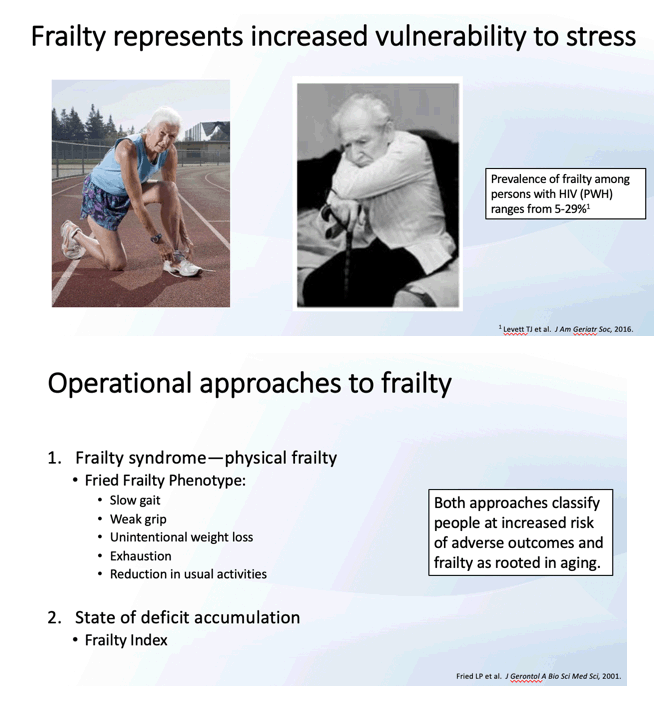
A number of ways to clinically assess frailty, but there are two main operational approaches:
1.Frailty syndrome or phenotype that underscores physical decline. This is also termed physical frailty. Measured by the Fried frailty phenotype. Frail if meet 3 or more criteria.
2.Other approach is general age-related state of poor health that is proportional to how many age-related deficits an individual has accumulated. Measured by frailty index
Frail 3 or greater
Prefrail 1-2
While frailty has traditionally been conceptualized as risk factor for adverse outcomes, there is growing evidence that it impacts expression of chronic and acquired diseases
In the example of Alzheimer’s disease, the pathological changes in the brain that are thought to increase dementia risk include plaques, tangles, Lewy bodies and ischemic changes. However, individuals with marked Alzheimer disease pathology do not always present with dementia.
It has been found that frailty status moderates this risk.
Those without pathology and who are fit have the lowest risk of dementia
Even people with a high burden of Alzheimer disease pathology are at less risk of meeting criteria for dementia if they have low frailty.
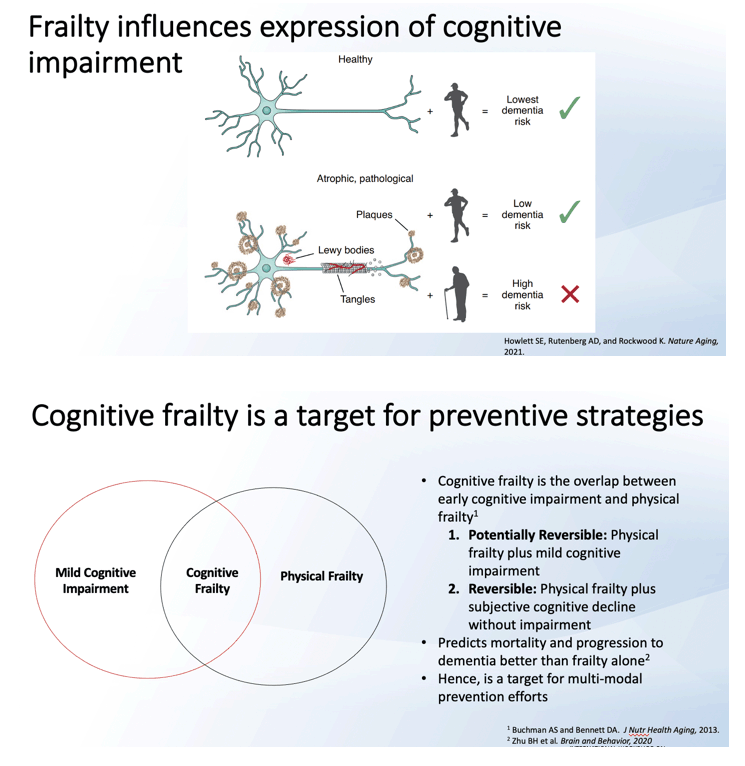
In the AIDS Clinical Trials Group HAILO cohort, looked at the association between frailty, cog impairment either alone or together and adverse outcomes.
Adverse outcomes in this study were falls, disability, and death
They found that frailty and CI together were associated with greater risk of these adverse outcomes than CI alone
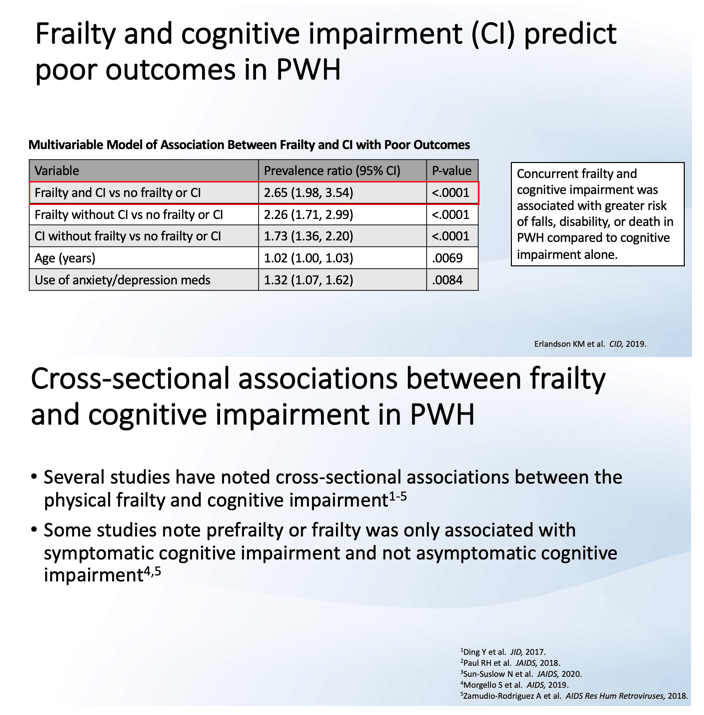
HIV specific factors also seem to impact the relationship between cognition and frailty among PWH
There was an interaction between CD4 count and frailty on HAND. CD4 count and the likelihood of HAND were negatively associated at more than 1 symptoms of frailty, so for those with 2 or more frailty symptoms, you see a greater proportion of cognitive imprairment at lower CD4.
Conversely, proportion of HAND and frailty score were positively associated at CD4 lower than 642, so that among those with Cd4< 642 porporiton of HAND increases with increasing frailty score
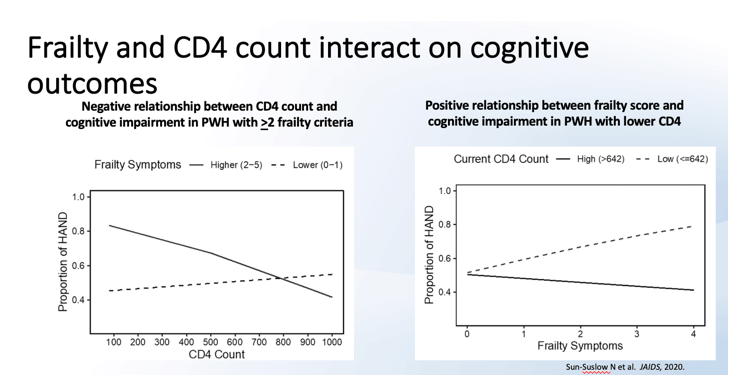
Specific comorbidities play an important role in the relationship between frailty and congition in HIV. In particular, depression, which is more common in PWH
First study of 122 PWH noted cross sectional association between exec function and frailty, but accounting for depression eliminated this relaitonshiop.
In another study of 790 people over the age of 40, ½ of who had HIV. PWH were more likely to have frailty, but accounting for cog impairment and particularly depression attenuated this relationship.
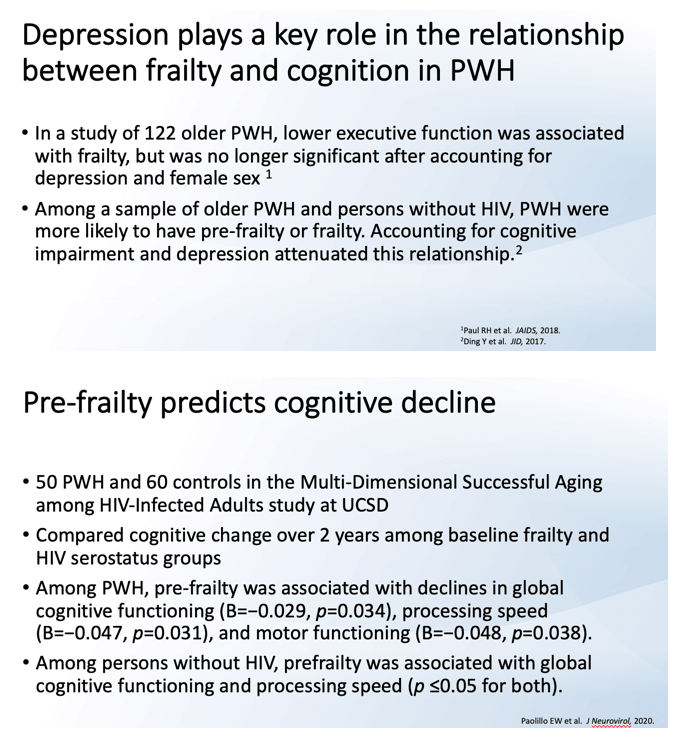
Unable to assess frailty in HIV- because only one person
Only 7 in the HIV+ frail group. Did not demonstrate significant declines in cognitive functioning, but had lowest baseline neurocognitive scores overall
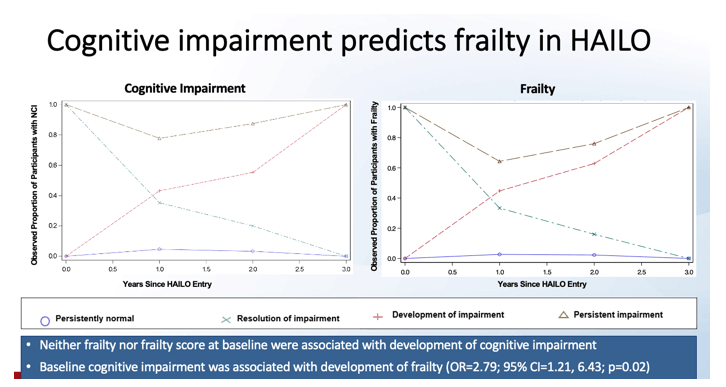
ACTG A5322 participants who developed NCI as indexed by tests of impaired executive functioning and processing speed during the first 3 years were compared to persons who maintained normal cognitive function; those who demonstrated development of NCI were compared to those who had cognitive impairment over the study period Participants were similarly compared by frailty trajectory. We fit multinomial logistic regression models to assess associations between baseline covariates (including NCI) and frailty, and associations between baseline covariates (including frailty) and NCI.
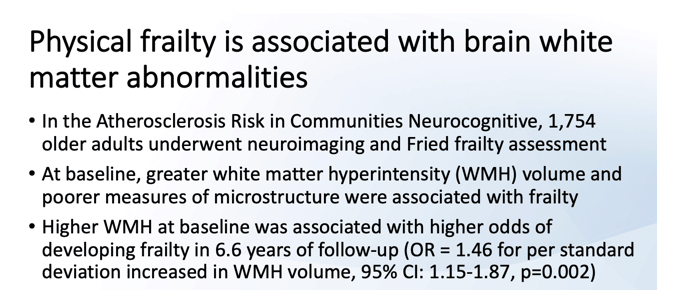
At baseline, greater WMH and white matter microstructure abnormalities (fractional anisotropy and mean diffusivity) These relationships noted even when dementia and prior h/o stroke excluded, but not when restricted to cognitively normal adulth
Among those who were non-frail at baseline, greater white matter hyperintensity was associated with greater odds of developing frailty
Microstructure using diffusion tensor imaging fractional anisotropy (FA) and mean diffusivity
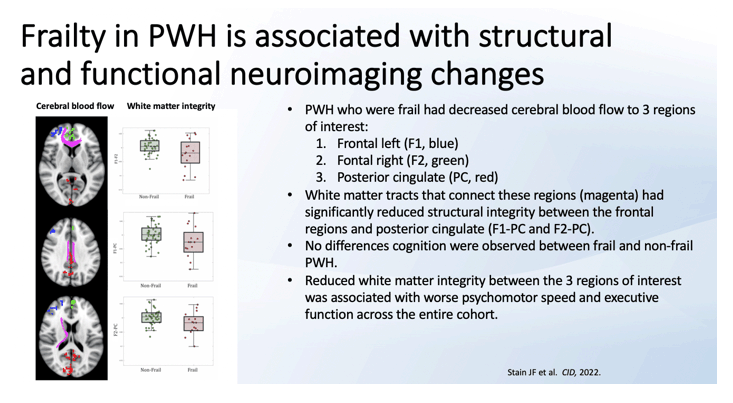
116 PWH at Wash U virolologically controlled. over the aged 50 and older who had undergone cocgntive and Fried Frailty assessments. 16 were frail and 100 non frail controls.
Compared structural and functional neuroimaging.
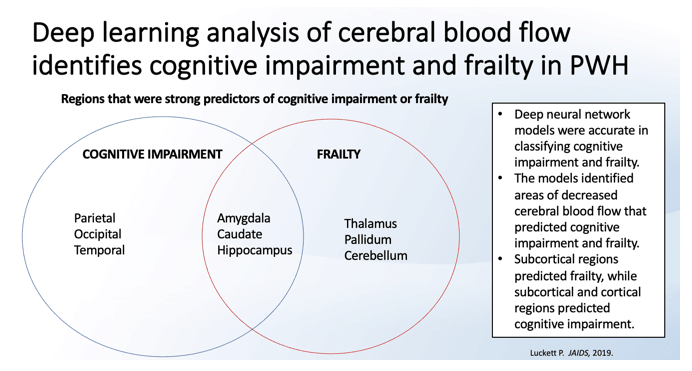
125 PWH virologically controlled. Neuropsych testing and Fried Frailty

Could target either syndrome or Different risk factors can independently contribute to the risk of a geriatric syndrome like cognitive impairment and frailty
Cognitive function and frailty can also share risk factors
Targeting shared risk factors can have benefits in terms of both syndromes
Multicomponent interventions targeting multiple risk factors could have real benefit-in the general population multicomponent interventions of exercise, nutrition and cognitive intervention can be benefitical
In addition, consider prioritizing these individuals with these syndromes for geriatric assessment
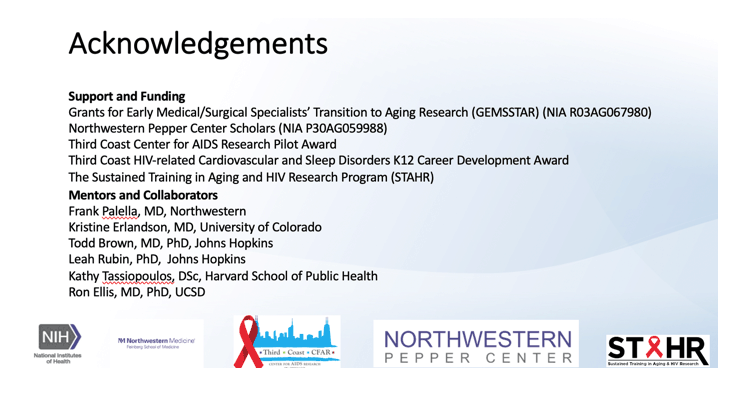
|
| |
|
 |
 |
|
|